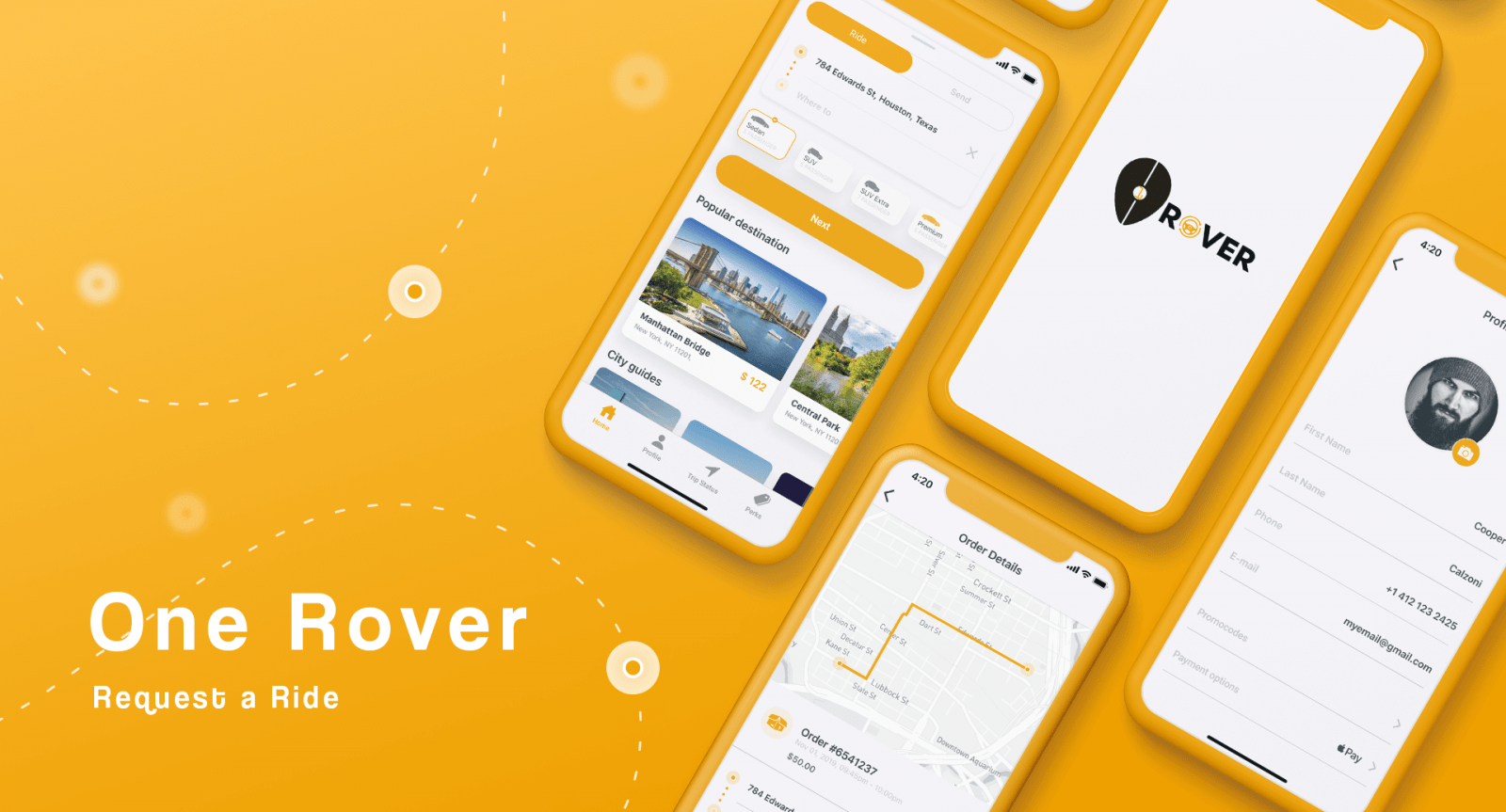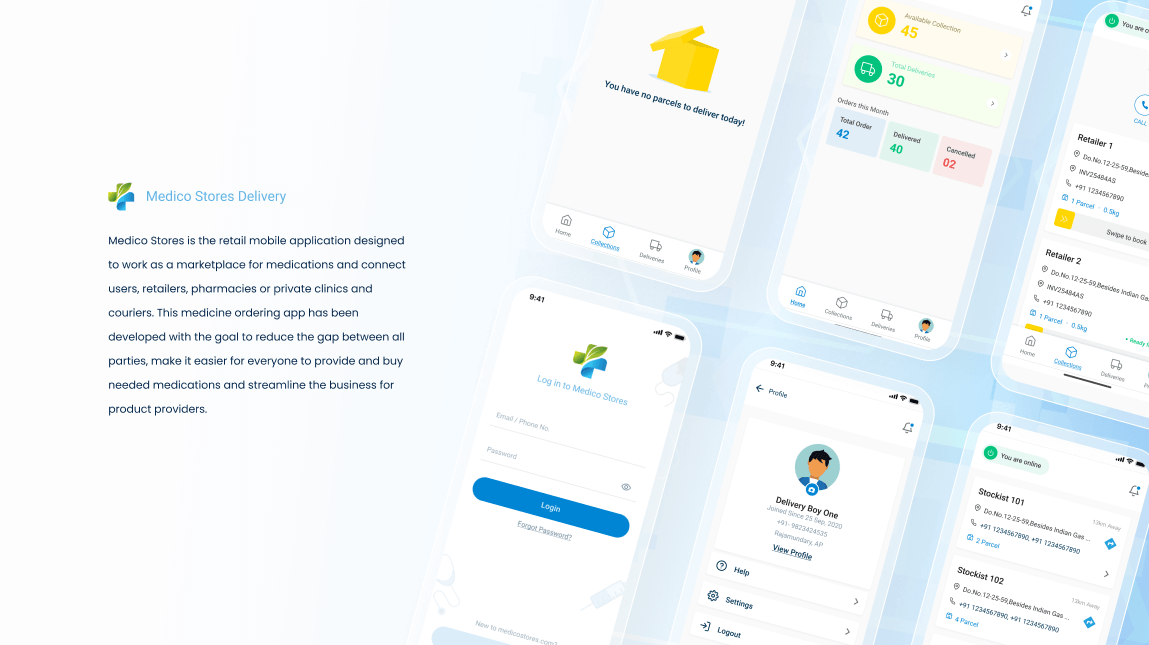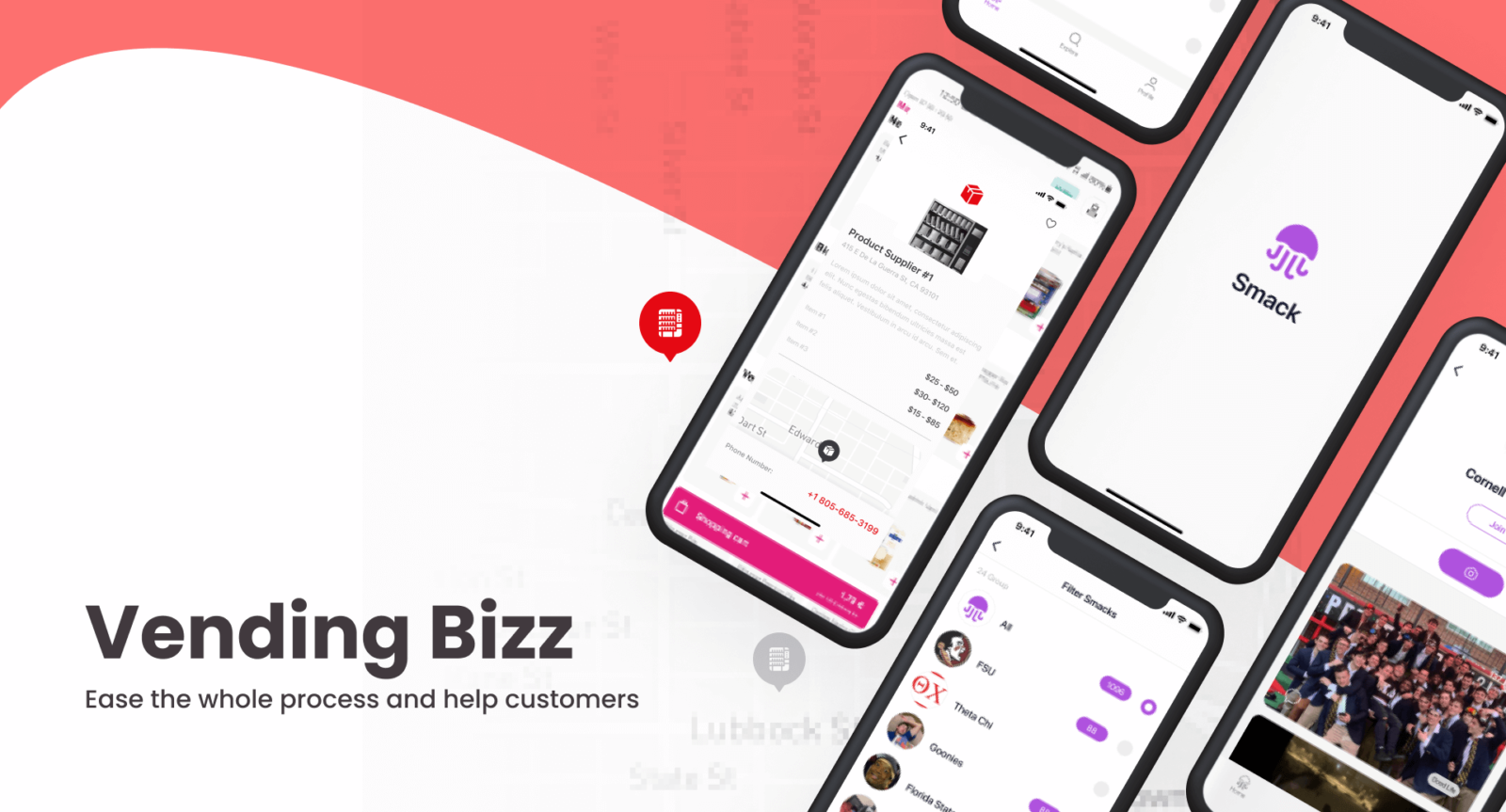Ordering food online is a relatively old trend among consumers. Online grocery shopping has been around for several years. However, the food industry has witnessed an increased need for on-demand food delivery.
In recent years, the influx of food delivery apps has made it practical and hitch-free for consumers to order food online. As such, the food delivery app industry is steadily growing with no signs of slowing down in the near future. Statistics have also projected an annual growth rate of 6.4% in the Online Food Delivery sector. These numbers will reach $151 million in 2021. As a result, this industry is a gold-mine for any food delivery app development company seeking to diversify their business.
Still wondering how to build a food delivery business from scratch? Want to grab a piece of this fast-growing market and set up a food delivery app? This article will provide you with all the steps you need to follow. Let’s dive right in!
Research the Latest Trends within the Food Delivery Industry
You might ask: “How can I create my own food delivery app?” Well, for ‘techpreneurs’ seeking to join the industry and create an app for food delivery, it’s essential to stay abreast of the latest trends to gain a competitive advantage. Based on recent projections and statistics, here are the major industry-relevant trends at the moment:
-
Contactless delivery
Contact-free delivery is one of the most prominent trends in food delivery these days. Although contactless delivery did exist before 2020, the COVID-19 pandemic has led to the popularization of this delivery model. And with the current need for social distancing, many restaurants have capitalized on this food delivery trend to ensure customer and employee safety.
For techpreneurs trying to create an online food delivery app in 2021 and beyond, adapting to this trend would be a major selling point.
-
Third-party delivery
Third-party delivery is a fast-growing market trend as more companies (and restaurants) are beginning to adopt this model. Today, restaurant chains are partnering with third-party delivery companies to ensure smooth delivery operations.
However, this trend comes with a slight hitch. By partnering with multiple third-party fleets, food companies tend to lose control over their delivery operations. Nevertheless, restaurants can now avoid this risk by hiring delivery as a service (DaaS) providers to handle the delivery.
-
Increased online grocery sales
Due to the global pandemic that started in 2020, online grocery sales have skyrocketed. More consumers are in search of on-demand grocery delivery since it is safer and less stressful.
This also poses a problem for brick-and-mortar grocery stores that haven’t fully adapted to the online food delivery model yet. However, traditional grocers can quickly scale up by partnering with multiple delivery fleets.
-
In-house restaurant delivery fleets
This trend offers food companies full visibility and control of their delivery operations while helping them stay on top of the competition at the same time. Today, more companies are toeing the path of in-house delivery and utilizing delivery dispatch software, which uses automation to assign drivers to every given order.
-
Delivery using drones/robots
As the development of AI advances, user-oriented industries, including the food industry, are adopting AI technology to cut down costs and offer more value to consumers. Several food companies now deliver food to consumers using drones and robots.
Although the world is still nowhere near a robotics-controlled future with thousands of drones flying and delivering food orders, many food businesses are making strides towards creating a drone food delivery model.
-
A rise in food delivery subscription
The popular saying “millennials run today’s world” is one quote that is ever-true. Just think: most millennials would rather order food from the comfort of their own homes than go out to eat. As such, restaurants are creating subscription plans to accommodate the needs of millennial consumers.
Moreover, since consumers have different eating preferences, the only all-encompassing response is to create a food delivery model tailored to each individual.
Adapt your food delivery business to modern requirements.
Let's talk
Identify Your Business Model
If you are trying to make a food delivery app, it is crucial to identify your preferred business model. Currently, there are three predominant food delivery business models in the market. These include:
-
The Order-Only Model
Under this business model, your online platform connects the users to local restaurants. With your platform, customers can easily order food from their favorite restaurants and interact with them in all needed ways.
One major advantage of the order-only model is its simplicity. As the owner, you don’t have to worry about the complexities of food delivery. The customer simply places an order through your food delivery platform or app, and the restaurants will receive the order through mobile push notifications or mail. Once the restaurant has received the order, they can confirm it and reach out to the customer.
However, this model’s disadvantage is that attracting top-notch restaurants to your platform can be challenging in the early stages. Therefore, you may need to accumulate more resources on marketing your delivery app or platform.
-
The Order and Delivery Model
This food delivery model is more complicated than the order-only model. Here, you handle restaurants, customers, and delivery. However, the order and delivery model is quite popular among eateries since it controls the entire delivery process.
Under this model, restaurants register on the online platform, and customers can place an order from the restaurant through your platform. Once payment has been made, the courier closest to the restaurant will receive a notification to pick up the order and deliver it to the customer.
One significant challenge associated with this business model is timely delivery. Late deliveries may cause your food delivery app to have low ratings. Besides, this model also requires more resources and close monitoring than the order-only model.
-
The Full-Stack Model
Under this model, the app covers order processing and food delivery in-house. The business owner controls everything, from the cooking to processing and delivery eventually. To supervise the cooking process, you may need to hire a chef.
The drivers collaborating with the companies facilitate the food delivery process. Each driver receives a set of orders to deliver to clients.The full-stack model requires a lot of financial resources. Therefore, it’s essential to research the required cost to start a food delivery app before kickstarting the development process.
Must-Have Features for Your Food Delivery App
Most food delivery apps have two versions/phases: the customer app and the restaurant app. The customer app lets clients sign up and order food or groceries from their favorite restaurants. On the other hand, the restaurant app is designed solely for vendors to process orders and deliver to customers.
If you’re trying to develop an app for food delivery like DoorDash that can beat the existing competition, it’s essential to incorporate the following features:
Registration and account creation
Search bar
Payment functionality
Location management
Registration and account creation
This feature lets customers create personal profiles to access the full functionality of the app. It’s essential to provide a variety of registration/login options for users. This way, users uninterested in email account sign up can easily create accounts using other media profiles.
Search bar
You can enhance your food delivery app by providing a feature that lets users search by dishes, food category, or restaurants. This search feature should also include filters, photos, and meal descriptions.
Payment functionality
Once orders have been processed, users should be able to pay via the app’s built-in payment system. At the same time, it is advisable to offer a wide variety of payment options and ensure that they always remain fully functional to avoid abandoned carts.
Location management
This feature helps customers find the nearest restaurants to their location. It also allows couriers to determine the best route to the customer’s address and lets users track the order in real-time.

UX/UI Design
In today’s world, users expect more from websites. They want to feel aesthetic satisfaction and enjoy optimal functionality at the same time. Studies have shown that up to thirty percent of online shoppers leave a website if they consider the design inconvenient or unappealing. As such, your food delivery app should provide users with a pleasurable design and experience.
Here are two major considerations when it comes to UI/UX design:
Color analysis
In UI design, colors are just like a human face. It’s the first thing users notice when they look at your website or app. However, selecting color schemes for design isn’t exactly the easiest responsibility.
Inexperienced developers often select terrible color schemes, which end up affecting the app’s overall design. To avoid this headache, always check out what the competition is doing for guidelines. Once you’ve done this, you can then create a mood board using color theory and the user demographics as a guide.
Responsiveness
How responsive is your website? Does it work well on both mobile and desktop?
Responsiveness determines how users will accept and experience your application. If the app is buggy, no one will download it, and the rating will plummet in due time. Besides, no user will stick around if your business page takes ages to load. As such, ensure that your app is bug-free and responsive on all devices. The UI/UX design should be as seamless as possible.
Wondering how to code a food delivery app? Let’s take a look at the typical design process at Interexy.
Reach out to us for crafting a user-centric app that is worth a thousand downloads
Get in touchDevelopment Stage
Ready to build a food delivery app? Here are the stages required when making a food delivery app that is highly user-friendly:
-
Prototyping and wireframing
This stage involves creating a layout of a web page displaying the interface elements that will appear on each page. Think of it as a design plan. Essentially, the purpose of this stage is to provide a clear visual understanding of the app’s appearance on multiple devices. This way, the designers and developers can make necessary adjustments and reviews before the creative phase begins.
-
UI/UX design
This is the core of the design stage because the developers create a flawless interface for the app. The UI/UX design stage also involves incorporating functionality and responsiveness into the application. Nowadays, designers use open-source platforms like Sketch and Figma to work on designs.
-
Development
This stage focuses on transforming the wireframes and prototypes into a functional application. Developers write code to mold the app into a finished product. Depending on your target audience, your developers can create Android versions or focus on the iOS version. But cross-platform frameworks like Flutter and React Native allow software development for Android and iOS simultaneously.
-
Quality assurance and testing
After building the food delivery app, it is necessary to test it for bugs and glitches. The quality assurance team equally checks the app’s responsiveness and overall functionality.
This stage involves creating a layout of a web page displaying the interface elements that will appear on each page. Think of it as a design plan. Essentially, the purpose of this stage is to provide a clear visual understanding of the app’s appearance on multiple devices. This way, the designers and developers can make necessary adjustments and reviews before the creative phase begins.
Generate Revenue with Your Food Delivery App
Now that you’ve learned how to create a food delivery app of your own, it’s time to learn how to monetize it and enjoy the revenue from your app. Since the food delivery app development pricing is significant, it’s important to set a revenue generation strategy to ensure that you get sufficient ROI.
Here are some tips that will help you:
- Delivery fees: You could charge delivery rates depending on the distance. Conversely, delivery rates could be a set percentage of the order’s total cost.
- Advertising: Restaurants could advertise their services within the application for a negotiated price. You can also monetize your app with native and banner ads.
- Commission percentage: Food delivery apps can charge restaurants specific predefined commission rates based on the order size. The larger the order, the larger the commission.
Digitize your food delivery business with our services
Let's discuss
Our Experience
We’re a cutting-edge app development partner and can deliver complex development solutions that create robust and powerful apps. One of our major projects is the One Rover experience — a service aimed at enhancing the entire ridesharing industry. It also offers better functionalities and improved customer support. Using React Native, the service offers seamless, scalable ridesharing solutions to users and drivers. Check out our case study to find out more about our experience.
Final Thoughts
With modern smart devices and an abundance of food delivery businesses, customers are becoming more demanding. You now need a highly-intuitive cross-platform app that works on all devices. And before you know it, your app will gather top ratings in the Store. Ultimately, if you’re about to enter the food industry with your app idea that’s enhanced with innovative technology, contact us, and our experts can give you a detailed estimate.
FAQs on How to Make a Food Delivery App
-
How to develop a food delivery app?
To develop a food delivery app, you need to follow several key steps:
- Conduct market research to analyze competitors and define your unique value proposition.
- Choose the right features, including real-time order tracking, multiple payment options, restaurant listings, and a user-friendly interface.
- Select a tech stack, such as React Native, Swift, Kotlin, or Node.js, based on your app’s requirements and scalability needs.
- Create compelling UI/UX design to ensure a smooth and engaging flow and user experience.
- Build the app using agile methodologies and test thoroughly.
- Deploy on app stores and promote your app.
- Conduct regular updates and feature enhancements.
-
How much does it cost to build a food delivery app?
The cost to build a food delivery app depends on several factors, including app complexity, features, and location of the development team. A basic app can cost between $20,000 to $40,000, while a more advanced food delivery app development project with real-time tracking and AI-powered recommendations can cost $50,000 to $100,000 or more. To get an accurate estimate, consult a professional team to create a food delivery app tailored to your needs.
-
What is the most successful food delivery app?
The most successful food delivery apps worldwide include Uber Eats, DoorDash, and Grubhub. These platforms have grown rapidly due to their seamless user experience, large restaurant partnerships, and advanced logistics. If you’re looking to create a food delivery app, studying these industry leaders can provide valuable insights into what works best.
-
Do delivery apps make money?
Yes, food delivery app development can be highly profitable if executed correctly. Revenue models include:
- Delivery Fees: Customers pay a small fee for each order.
- Commission from Restaurants: A percentage of each sale goes to the app owner.
- Subscription Plans: Users pay a monthly fee for benefits like free delivery.
- Advertising & Promotions: Restaurants can pay to be featured on the app.
If you’re wondering how to make a food delivery app profitable, choosing the right monetization strategy is key.






